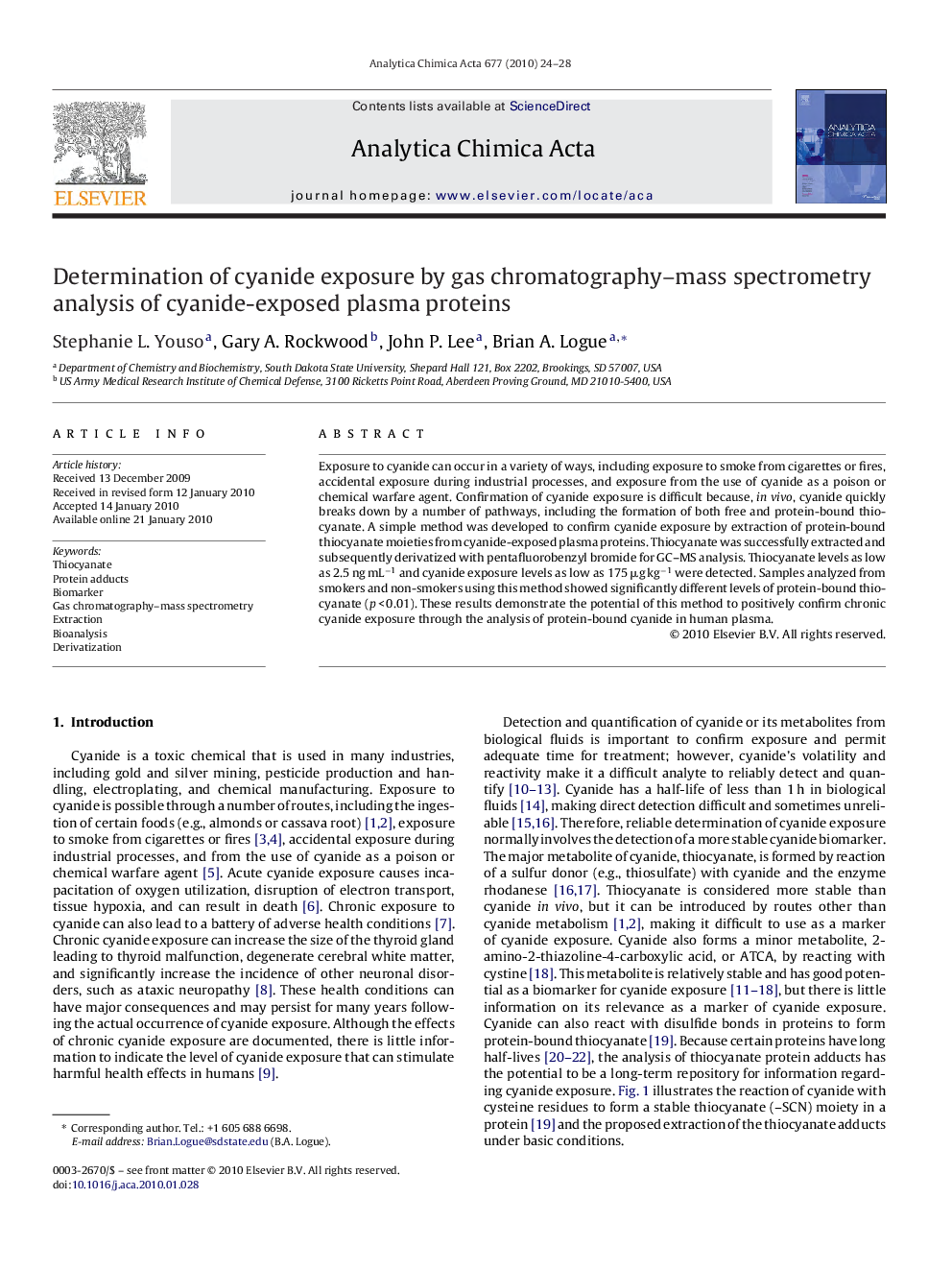| Article ID | Journal | Published Year | Pages | File Type |
|---|---|---|---|---|
| 1168170 | Analytica Chimica Acta | 2010 | 5 Pages |
Exposure to cyanide can occur in a variety of ways, including exposure to smoke from cigarettes or fires, accidental exposure during industrial processes, and exposure from the use of cyanide as a poison or chemical warfare agent. Confirmation of cyanide exposure is difficult because, in vivo, cyanide quickly breaks down by a number of pathways, including the formation of both free and protein-bound thiocyanate. A simple method was developed to confirm cyanide exposure by extraction of protein-bound thiocyanate moieties from cyanide-exposed plasma proteins. Thiocyanate was successfully extracted and subsequently derivatized with pentafluorobenzyl bromide for GC–MS analysis. Thiocyanate levels as low as 2.5 ng mL−1 and cyanide exposure levels as low as 175 μg kg−1 were detected. Samples analyzed from smokers and non-smokers using this method showed significantly different levels of protein-bound thiocyanate (p < 0.01). These results demonstrate the potential of this method to positively confirm chronic cyanide exposure through the analysis of protein-bound cyanide in human plasma.
